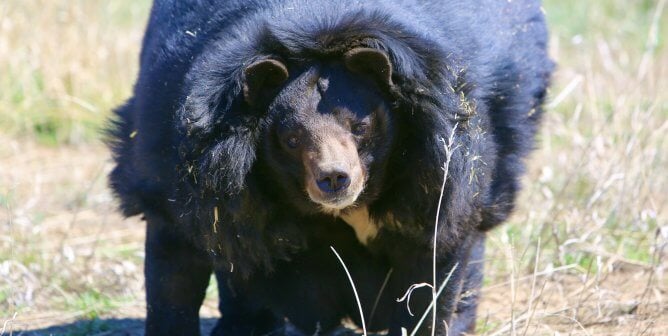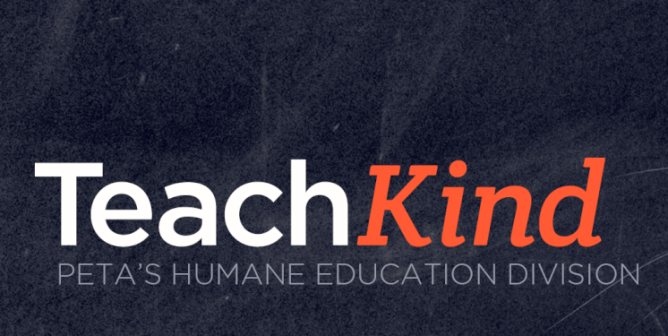Teaching With Film: ‘Secrets of the Octopus’ Discussion Questions
If you ask your students what they think about octopuses, you’ll likely get a variety of responses. Some kids may think these animals are cool, while others may think they’re weird—after all, octopuses have been described as “aliens on Earth.” But once they’ve watched Secrets of the Octopus, a new docuseries from National Geographic, they’ll all surely say, “Octopuses are awesome!”
The docuseries consists of three episodes that follow Dr. Alex Schnell, who has been studying octopuses for 15 years, and other leading scientists. They give viewers a rare glimpse into the secretive lives of octopuses by venturing into their natural habitat to study their abilities, intelligence, and social behavior. Your students will be amazed to learn information previously unknown to scientists that will leave them wondering, “What else do we still have to learn about octopuses and other animals?”
Secrets of the Octopus, produced by Academy Award winner James Cameron and narrated by actor Paul Rudd, is available to watch for free on NationalGeographic.com and ABC.com or with paid subscriptions on Disney+, Hulu, YouTube, and other platforms.
You can view this documentary as a class and then use the discussion questions below to help students understand the information and examine the ideas presented. Depending on the needs of your students, you may wish to pause the film to discuss the questions as a group or have students respond to them in writing after watching the film. You can use this activity to address these Common Core Standards in speaking and listening:
Grades 9 and 10
CCSSELA-LITERACY.SL.9-10.1.D: Respond thoughtfully to diverse perspectives, summarize points of agreement and disagreement, and, when warranted, qualify or justify their own views and understanding and make new connections in light of the evidence and reasoning presented
CCSSELA-LITERACY.SL.9-10.3: Evaluate a speaker’s point of view, reasoning, and use of evidence and rhetoric, identifying any fallacious reasoning or exaggerated or distorted evidence
CCSS.ELA-LITERACY.W.9-10.1:Write arguments to support claims in an analysis of substantive topics or texts, using valid reasoning and relevant and sufficient evidence
Grades 11 and 12
ELA-LITERACY.SL.11-12.1.D: Respond thoughtfully to diverse perspectives; synthesize comments, claims, and evidence made on all sides of an issue; resolve contradictions when possible; and determine what additional information or research is required to deepen the investigation or complete the task
ELA-LITERACY.SL.11-12.3: Evaluate a speaker’s point of view, reasoning, and use of evidence and rhetoric, assessing the stance, premises, links among ideas, word choice, points of emphasis, and tone used
CCSS.ELA-LITERACY.W.11-12.1: Write arguments to support claims in an analysis of substantive topics or texts, using valid reasoning and relevant and sufficient evidence
Important note: Secrets of the Octopus is rated “TV-PG” on Disney+, and it contains some sexual content pertaining to reproduction. In Episode 1, mating behavior is discussed and words such as “mate” and “semen” are used. Question 5 of the Episode 1 discussion questions touches on this topic. This segment may not be suitable for all ages. We advise using your professional judgment to determine whether your students are mature enough to view it.
Let students know that there are two guiding questions for this activity and that they should be prepared to state their positions on them after watching the series:
- How should humans treat octopuses and other animals?
- What should we base the answer to that question on?
Before beginning, it’s important to explain why approaching or touching wildlife is never appropriate: Doing so endangers both humans and animals and risks legal repercussions and ecosystem disruption.
Discussion Questions
Episode 1: “Shapeshifters”
- Throughout the series, you may notice that the narrator switches between referring to octopuses as “it” and using the correct pronouns “he” and “she.” Why is it important to refer to octopuses and other animals as “she/her,” “he/him,” or “they/them” rather than “it?”
Possible answer: Octopuses and other animals, including humans, are living, thinking, feeling (sentient) beings. “It” is only an appropriate pronoun for inanimate objects like books, furniture, etc. Calling animals “it” may seem harmless, but doing so suggests that they don’t have feelings or thoughts and ignores the fact that they’re thinking, sensitive individuals who deserve to be treated with kindness and respect. (Evaluative) - (a) Although it’s important never to approach or touch wild animals, explain how the following scenario from this episode is an exception: The day octopus, Scarlett, relaxes and shows Dr. Alex Schnell that she trusts her, even going so far as to touch her hand.
Possible answer: This scenario is an exception because Dr. Schnell is an expert scientist who has dedicated many years to studying octopuses and has spent considerable time building trust with Scarlett. Additionally, Scarlett is the one who initiated contact by reaching out and touching Dr. Schnell, not the other way around. (Evaluative)
(b) Why do you think it’s important never to approach or touch wild animals?
Possible answer: Approaching or touching wild animals could harm them physically or cause them to feel scared, stressed, or threatened, which could prompt them to become aggressive and/or attack. If wild animals become accustomed to humans’ presence, they could lose their natural fear of humans, which can lead to dangerous situations, as they might approach humans to seek food. There are also health concerns, since wild animals can carry diseases that are transmissible to humans. This type of interaction can disrupt wildlife’s natural activities, such as mating, nesting, and feeding, which can have long-term negative effects on their populations and ecosystems. Interfering with wild animals can also lead to legal consequences, since there are many laws that prohibit interacting with wildlife. (Evaluative) (Any of these answers are acceptable.) - Even though the blue-ringed octopus is the size of a golf ball, she can deliver enough neurotoxin in one bite to kill an adult human in minutes, which suggests that she could kill any of her predators. But instead of going into attack mode when a predator stalks her, what does she do instead? What do you think that says about her intention?
Answer: Instead of attacking, she changes the color of her skin to make her blue rings brighter and more visible. Bright colors are a sign that an animal is poisonous, so when her predator saw her bright blue rings, they left her alone. (Literal)
Possible answer: This says that she didn’t intend to harm her predator. Instead, she gave them a peaceful warning that said, “Don’t hurt me and I won’t hurt you.” (Inferential) - A male octopus called “The Mimic” seems to understand how other animals view him and exploits their fears in a strategic and manipulative way to get what he wants. Describe an example of how he does this. Why do you think he uses this mimicking behavior instead of fighting?
Answer: While searching for a meal, “The Mimic” wandered into damselfish territory, and they don’t like strangers invading their space. They started biting him, so he camouflaged his skin to look like, or mimic, an animal he knew the damselfish were afraid of and wouldn’t mess with—the venomous sea krait—which frightened them into leaving him alone. (Literal)
Possible answer: “The Mimic” octopus probably uses his mimicking strategy to scare other animals into leaving him alone because he feels it’s safer than trying to fight them. He could potentially lose a fight, so scaring other animals to avoid danger is a smarter strategy. (Inferential)
Optional question:
Important note: This question is related to sexual content. - Octopuses use shapeshifting to catch prey and fend off predators, but they use it for something else as well. Explain why a male day octopus was using shapeshifting in front of Scarlett. What was the risk, and why was he willing to take that risk? Did it pay off? What happened that had never been seen by scientists before?
Answer: A male day octopus was trying to impress Scarlett with his shapeshifting skills so that she would choose him as a mate. The risk was that his display of changing colors could attract predators. He was willing to take the risk because she wouldn’t choose him as a mate if he just blended in. He had to stand out to impress her. It paid off, because she did choose him as a mate. For the first time ever, scientists saw a female octopus expel packets of semen from previous mates because she found a better suitor and wanted to use his alone. (Literal)
Something to think about: Octopuses need to eat crabs and other aquatic animals in order to survive, but humans don’t. There’s a lot to admire about how clever crabs are. Check out this video about crabs titled “Animalkind: Animals Are Awesome, and Crabs Are Clever” and follow along using this guide to learn why we should leave crabs to their own endeavors.
Episode 2: “Masterminds”
- In what ways do the birth and early life experiences of a baby octopus differ from those of a human baby? What must baby octopuses learn, and what does that say about their intelligence?
Possible answer: Unlike human infants, baby octopuses are entirely on their own from birth, as all octopus mothers die shortly after their babies are born. This means that baby octopuses are completely independent and don’t require any parental care. In contrast, human babies rely on their mothers or other caregivers to meet their needs and teach them appropriate behavior. (Inferential)
Answer: Baby octopuses must learn everything about their environment on their own, including how to hunt for food, solve problems, and even plan for the future. They also teach themselves to use objects as tools. This remarkable self-sufficiency highlights their intelligence, as they acquire these skills at astonishing speed without assistance. (Literal) - The coconut octopus uses her propulsive siphon to do what with a coconut lying on the ocean floor? How do scientists define “tool use,” and how else does she demonstrate this? Name two objects and describe how she uses them.
Answer: She uses her propulsive siphon like a leaf blower to remove sand from the coconut shell she wants to get inside. Scientists define “tool use” as “using an object to solve a problem.” Once she blows the sand out of the coconut, she gets inside and uses it as a hideout. Later in the episode, she takes two clam shells and uses them like shields to defend herself against a mantis shrimp who was attacking her. (Literal) - Base your answers to the following questions on this quote from the film: “Octopuses don’t just make simple plans. They can devise complex and cunning strategies.” What does the island octopus do? How does he demonstrate a complex and cunning strategy?
Answer: After becoming stranded in a tide pool, he must use his legs to crawl over the exposed rocks to get to a place where there are a lot of crabs. Once he makes it to his destination, he moves on to the next step in his plan and uses rocks to cover himself so that the crabs can’t see him. Then he waits for a crab to come close enough for him to reach out and grab. (Literal)
Answer: This strategy is complex because has many parts, and it’s cunning because it requires him to think ahead and anticipate the crabs’ actions. (Literal) - An octopus is like a “multisensory GPS.” Scientists believe that octopuses have an especially sharp memory for geography, can build a mental map of visual landmarks, and can remember everything they touch and taste. Why are these skills important for their survival? Use this information to explain why keeping an octopus in a shopping mall aquarium would be cruel.
Answer: Octopuses use their “mental map” to navigate their world, especially to be aware of where obstacles and enemies might be so they can remember to avoid those places. They also use it to find food and to determine an escape route if they find themselves in danger. (Literal)
Possible answer: Since octopuses have a sharp memory for geography and are eager to explore, keeping them in a tank would deprive them of opportunities to travel and discover new places, which is important to them. (Inferential) - What does Dr. C.E. O’Brien say about the role sleep plays in octopus’ learning? What evidence does she give that suggests octopuses dream? What comparison is made?
Answer: Dr. O’Brien explains that sleep plays an important role in memory consolidation and learning in mammals and birds, so it’s very likely that octopuses sleep for the same reasons. It’s possible that octopuses are consolidating the memories of new paths they took that day or remembering where a tasty meal was found or where an enemy was. She thinks octopuses dream because they go into a state of “active sleep” during which they rapidly change colors and move their mantle, arms, and suckers. She compares this behavior to that of sleeping dogs, who move their paws and whiskers, possibly dreaming about chasing a squirrel or a rabbit. (Literal)
Optional Questions - What happened when the male mantis shrimp challenged the female coconut octopus? Why did her behavior excite scientists so much? Explain why the mantis shrimp was such a “big” adversary for her even though he’s so small.
Answer: She grabbed a shell that she had been using as her den shielded herself with it, blocking the mantis shrimp’s attack. Her behavior was exciting to scientists because it demonstrated “really complex intelligence,” and it was behavior that had never been filmed before. Even though they’re small, mantis shrimp are highly aggressive, are highly territorial, and have the fastest punch of any animal—as fast as a bullet and 50 times faster than the blink of an eye. A mantis shrimp’s high-powered punch can kill animals much larger than they are. In this case, the mantis shrimp’s punch was painful to the coconut octopus and possibly could’ve killed her had she not found a way to protect herself. (Literal) - Extreme diver Krystal Janicki says, “I get a real sense that [octopuses] want to connect with us, that they want to learn from us. They have such curious minds. Maybe they’re not so different from us after all.” What does this mean to you? If this were true for all animals, would it change how you interact with and treat them? If so, how?
Answers will vary. (Evaluative) - “When it comes to building neurons, critical brain connections for intelligence, octopuses have three times more capacity than humans. They are perfectly primed for new information.” How does this information affect your opinion of how humans treat octopuses, such as by farming them, eating them, and keeping them in shopping mall aquariums to entertain paying customers?
Answers will vary. (Evaluative) - Dr. Alex Schnell says, “When we’re looking for glimmers of intelligence, we traditionally focus on animals that are more closely related to us, but to find it in an octopus, that’s so distantly related from humans, that would completely reframe the way we think about intelligence in the animal kingdom.” How do you feel about this statement? How could this influence people’s views on other marine animals, like shrimp or fish?
Answers will vary. (Evaluative)
Something to think about: Even though this focuses on octopuses, it’s important to note that all sea animals are intelligent, have various skills—the mantis shrimp, for example, demonstrated bravery and determination—and should be allowed to live on their own terms without human interference.
Episode 3: “Social Networkers”
- The narrator says, “With social interactions so dangerous, it’s easy to see why an octopus like Scarlett would choose to be alone. But she seems perfectly content to hang out with Alex [Dr. Schnell]. They’re not antisocial—they’re just discerning.” Why might Scarlett choose to socialize with a human but not with another octopus? Is there evidence that supports your answer?
Possible answer: Scarlett is a day octopus who must touch others of her species to figure out what they want. When two day octopuses meet, they usually mate, eat each other, or both, which makes it risky to interact with others of their own kind. But Dr. Schnell continued visiting Scarlett over many days and respectfully observed her from a distance until trust was built. The octopus didn’t consider Schnell a predator or a threat. It’s possible that she even saw her interactions with Schnell as an opportunity to learn. (Inferential) - What unusual social situation has marine biologist Dr. Christine Huffard been studying for two decades? What species of octopus is involved? How do these animals “break the mold” when it comes to socializing, and how does the tide affect this?
Answer: Dr. Huffard has been studying the algae octopus’ “speed dating” habits. Scientists previously thought that all octopuses were loners, but this species “breaks the mold” by having frequent interactions many times a day. When the tide is low, these octopuses seem to be trapped in their dens, but when it rises, they’re freed to go “look for romance.” The rising tide brings them together and allows them to socialize. (Literal) - What are two things that make dorado octopuses so remarkable? Describe where they live and explain why they chose to live there.
Answer: First, they are so new to science that they only have a nickname, not an official name. Second, even though scientists believed octopuses were loners, they found over 100 dorado octopuses living together. They live 2 miles beneath the ocean’s surface, close to a deep-sea spring where warm water flows out of cracks in the sea floor. They chose this place because the warm water speeds up the development of the baby octopuses in their eggs. (Literal) - Dr. Schnell met a pale octopus who led her to an artificial reef. Describe what she found there. What theory does she have that might explain how this environment is possible? What did she say it was a perfect mix of, and how does that relate to the way humans behave in similar situations?
Answer: Dr. Schnell found about 100 octopuses of five different species in the same location. This is another example of how octopuses may not be the loners scientists thought they were. It’s possible that because they’re all so different, they can get along without fighting. “It’s a perfect mix of personalities for them all to co-exist. So perhaps, just like us, sometimes it’s their differences that allow them to get along.” (Literal) - It turns out that octopuses socially interact with more than just other octopuses. Describe the two other animal interactions Scarlett has in the video and note any similarities and differences between them.
Answer: A coral trout was having trouble catching prey, so he changed his body color from patterned to a pale color, which was a signal to Scarlett that he wanted to work together. She chose to accept him as her hunting buddy and began using her arms to do a “sweep search.” When she was in the right place, the trout returned to his normal color pattern. When he wanted to show her where a prey fish was, he would do a headstand above the fish’s location. If she missed any, he would get them. They both benefited from the hunting partnership. Dr. Schnell observed this interaction, which gave her the idea to try to become Scarlett’s hunting buddy. She followed her around as she hunted alone and noticed that she had missed a few crabs here and there. Schnell used her hand to point to the location where a crab was hiding, and Scarlett responded. She understood what Schnell was trying to communicate to her. (Literal)
Possible answer: The two interactions are similar because the trout and Dr. Schnell both used their bodies to communicate with Scarlett. They’re different because Scarlett had to share the prey with the trout but not with Schnell. (Inferential) - List as many octopus species as you can remember from this docuseries. If you were an octopus, which one would you be, and why?
Answers will vary. (Evaluative)
Something to think about: Just as it was shown that octopuses can be social creatures, it was also shown that fish can be social creatures. The coral trout had enough intelligence to know that he could ask an octopus for help and demonstrated that he was willing to help her in return.
Formulating and Defending Positions
Students can use the Building an Argument graphic organizer to develop explanations for their positions by using evidence to support them. They can discuss their positions and evidence in pairs or small groups and then write persuasive essays laying out the critical features of their arguments.
Using movies as part of a lesson plan on animal rights is an entertaining and effective way to keep students engaged while also cultivating compassion for animals. Looking for more fun “Teaching With Film” resources? Check out our discussion questions for The Game Changers.





